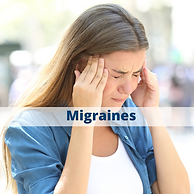UPPER-Body Conditions: Head, Neck, Shoulder
HEAD & NECK
CERVICAL RADICULOPATHY
Cervical radiculopathy is often referred to as a pinched nerve in the neck. It is defined by pain that may radiate (extend) from the neck to the shoulder, shoulder blade, arm, or hand. Weakness and lack of coordination in the arm and hand also can occur. The condition affects about 85 out of 100,000 people, and most often occurs in people in their 50s. It often develops from repeated irritation rather than a single injury. Athletes, heavy laborers, and workers who use vibrating machinery are commonly affected. People who sit for long periods, or those with arthritis in the neck region, also may be affected.
Physical therapy is an effective treatment for cervical radiculopathy. A physical therapist can help relieve the acute neck and arm symptoms that result from the condition. They also can help people improve general strength and function. Your treatment plan may include: Posture education, Pain management, Manual therapy, Range-of-motion exercises, Strengthening exercises, Functional training. In many cases, physical therapy completely resolves symptoms.
MIGRAINES AND NECK PAIN
Many headache and migraine sufferers experience concurrent neck pain, tension, stiffness, and discomfort. While often patients believe that neck and back pain is caused by the headache, in therapy they discover that it is the headache or migraine that is causing the neck or back pain.
Our physical therapy team is trained to identify a mechanical trigger of the headache symptoms. Their focus is to restore mobility to the joints, correct muscle imbalances and help patients manage their symptoms for optimal recovery.
NECK: DEGENERATIVE DISK DISEASE
Degenerative disk disease is the result of the deterioration of a piece of cartilage between each of the vertebrae in the spine called the “intervertebral disk”. As aging occurs and sometimes with injury, we lose some of the volume in the intervertebral cartilage, causing less space between the vertebrae. This can lead to friction and pain.
Our physical therapists teach specific exercises to improve movement in the joints and muscles leading to better body mechanics and reduced or eliminated pain. Some of the exercises used in the treatment of degenerative disk disease can be stretching and flexibility, strengthening, manual therapy, and posture and body mechanics education.
NEUROLOGICAL CONDITIONS
Neurological disorders can affect the brain and the nerves within the body and spinal cord.
Physical Therapy helps people with neurological conditions by strengthening muscles that have become weak. This can improve motor control, coordination, and balance. Physical therapy can also help patients with regaining independence with everyday tasks and movement.
TMJ DYSFUNCTION
TMJ Dysfunction is a common condition that restricts the functions of the jaw, like chewing and expanding the mouth.
Physical Therapy can help patients gain back the jaw's natural movement while reducing or eliminating pain. Our physical therapy team works with the patient to create a treatment plan that works best with the condition. Often treatment plans consist of manual therapy, strengthening, and range of motion exercises.
FROZEN SHOULDER
Frozen shoulder (Adhesive Capsulitis) is the stiffening of the shoulder caused by scar tissue. This condition results in painful movement and the loss of motion in the shoulder. While the actual cause of “frozen shoulder” has not yet been found, some believe it is caused by inflammation.
Physical Therapy is effective in relieving pain and helping patient get back to daily activities. Some treatments may include stretching techniques, manual therapy, strength training, and an at home-exercise program.
SHOULDER
POST-SURGICAL REHAB FOR SHOULDER INJURIES
Shoulder injuries can be caused excessive, repetitive motions, accidents, and athletic activities that involve overhead motion. Shoulder injuries can also happen through daily activities. Any of these injuries can lead to surgical care.
Physical Therapy following surgery can significantly improve post-surgery recovery. While there are many modalities used to help patients recover, most physical therapists will incorporate strengthening and stretching exercises into a treatment plan to help maximize the result of shoulder surgery and give patients the best shot at experiencing an optimal recovery..
SHOULDER DISLOCATION
A dislocated shoulder is an injury that takes place when your upper arm bone pops out of the cup-shaped socket that's part of your shoulder blade. Your shoulder is the body's most mobile joint, which makes it more susceptible to dislocation.
Physical therapy can make all the difference in how quickly healing takes place after a shoulder dislocation has been corrected. After the dislocated humerus has been moved back into position, your arm will be placed in a sling. Your Physical Therapy team will determine your rehabilitation needs and rehabilitation program to restore your mobility, strength, joint awareness, and sport-specific skills. Your physical therapist will also show you how to control your pain and relieve any inflammation.
SPORTS INJURIES (SHOULDER)
Shoulder injuries occur often in athletes who are in high stress sports for the shoulder, and sports involving repetitive motions. Sports where collisions and physical contact are involved are also more prone to suffering from shoulder injuries. Common types of shoulder injuries may include rotator cuff injuries, sprains, bursitis, fractures, dislocations, and shoulder instability.
A physical therapy treatment plan may include programs for shoulder injuries that are designed to strengthen the muscles around the shoulder joints and help relieve pain. Physical Therapy will also focus on improving mobility and function in the patient's shoulders.





_edited.png)








